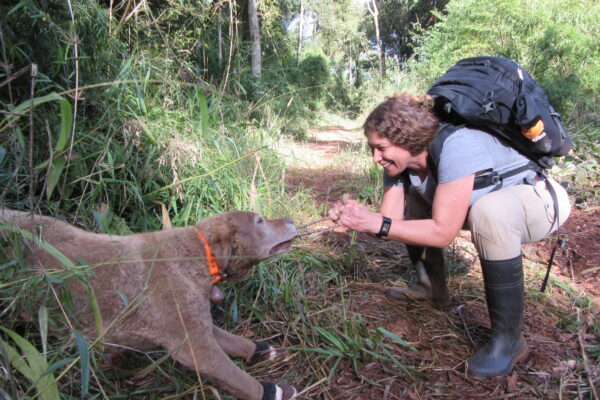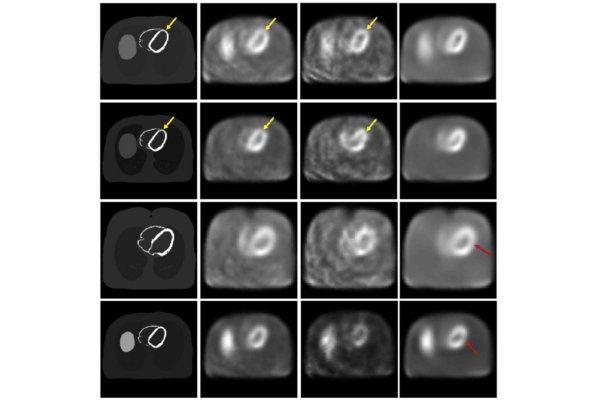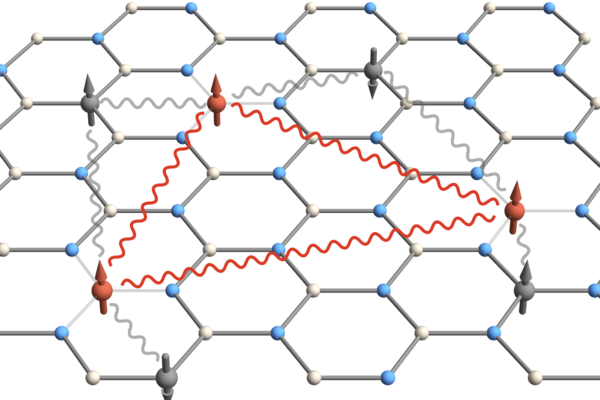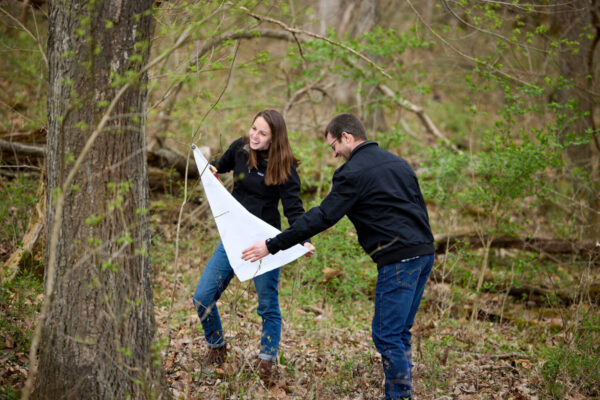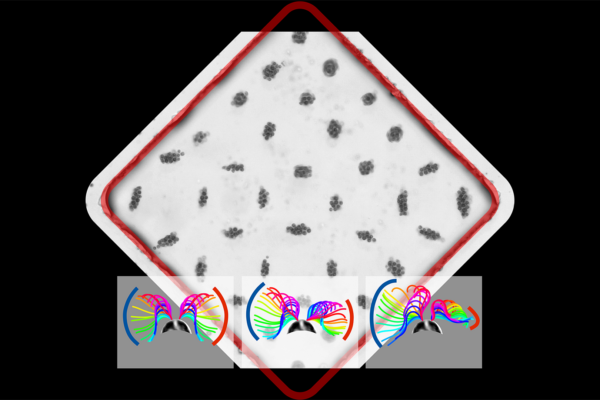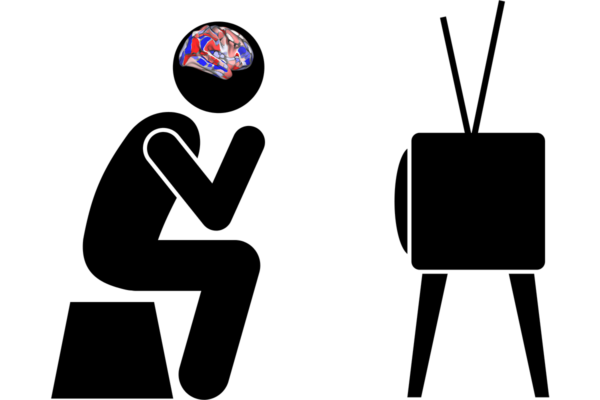Wonder, enchantment and the epic of evolution
As a biology faculty member, Professor Emerita Ursula Goodenough invited non-science majors to understand and reflect on the history of life on Earth. The second edition of her book, The Sacred Depths of Nature: How Life Has Emerged and Evolved, brings the wondrous saga to a new audience.
A dog’s work: Rescue animal goes all in for wildlife conservation
The legacy of Train, a retriever who assisted in conservation research, continues with a new study and a statue in Argentina.
Clinical utility, not ‘prettiness’
In a study published in Medical Physics, researchers in the lab of Abhinav Jha at the McKelvey School of Engineering evaluated artificial intelligence techniques for cleaning up medical images based on performance in clinical tasks.
Glitches in the matrix
As reported in a paper in Nature Communications, physicist Chong Zu in Arts & Sciences and his team are finding new ways to harness the quantum power of defects in otherwise flawless crystals.
Tick-borne Bourbon virus infects people, wildlife in St. Louis area
Ecologist Solny Adalsteinsson, at the Tyson Research Center, and virologist Jacco Boon, at the School of Medicine, are part of a One Health team studying how tick-borne Bourbon virus spreads through the environment, wildlife and people.
AI assistance could help reform pretrial scheduling
With funding from the National Science Foundation, William Yeoh at the McKelvey School of Engineering will use artificial intelligence to develop a fair, equitable and efficient scheduling system for courts.
Treadmill for microswimmers allows closer look at behavior
A team from the McKelvey School of Engineering at Washington University in St. Louis and Massachusetts Institute of Technology has created an acoustic microfluidic method that offers new opportunities to conduct experiments with swimming cells and microorganisms.
Improving air quality modeling
Researchers in Randall Martin’s lab at the McKelvey School of Engineering won a $500,000 grant from the National Science Foundation to study, and improve, the accuracy and resolution of models used to understand chemicals’ behavior in the atmosphere.
Children’s brain scans provide clues to processing of emotional cues
Washington University researchers found that how children’s brains process emotional cues typically is set by the time they are school age. They studied brain scans from hundreds of children ages 5 to 15 who watched videos that dealt with emotional topics.
Ran wins NSF CAREER award
Physicist Sheng Ran in Arts & Sciences has won a prestigious National Science Foundation award for a project investigating new quantum materials. The research has potential applications for next-generation electronics.
Older Stories

